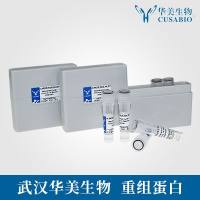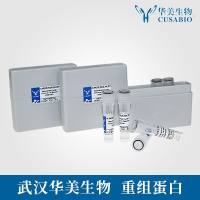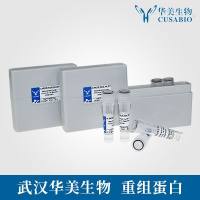Construction and Use of Glycan Microarrays
互联网
- Abstract
- Table of Contents
- Materials
- Figures
- Literature Cited
Abstract
Glycosylation is an important post?translational modification that influences many biological processes critical for development, normal physiologic function, and diseases. Unfortunately, progress toward understanding the roles of glycans in biology has been slow due to the challenges of studying glycans and the proteins that interact with them. Glycan microarrays provide a high?throughput approach for the rapid analysis of carbohydrate?macromolecule interactions. Protocols detailed here are intended to help laboratories with basic familiarity of DNA or protein microarrays to begin printing and performing assays using glycan microarrays. Basic and advanced data processing are also detailed, along with strategies for improving reproducibility of data collected with glycan arrays. Curr. Protoc. Chem Biol. 2:37?53. © 2010 by John Wiley & Sons, Inc.
Keywords: glycosylation; microarray; neoglycoconjugate; carbohydrate?dependent binding; serum antibody profile
Table of Contents
- Introduction
- Basic Protocol 1: Production of Glycan Microarrays
- Basic Protocol 2: Glycan Array Profiling of Carbohydrate‐Binding Properties
- Basic Protocol 3: Scanning and Data Analysis of Glycan Microarrays
- Alternate Protocol 1: Advanced Processing and Methods: Extending the Dynamic Range of Pixel Intensity Measurements
- Alternate Protocol 2: Normalize Slide Using Reference Sample
- Reagents and Solutions
- Commentary
- Literature Cited
- Figures
- Tables
Materials
Basic Protocol 1: Production of Glycan Microarrays
Materials
Basic Protocol 2: Glycan Array Profiling of Carbohydrate‐Binding Properties
Materials
Basic Protocol 3: Scanning and Data Analysis of Glycan Microarrays
Materials
|
Figures
-
Figure 1. Coordination of slide layout, configuration of sample plate, and pin positioning. (A ) An example is shown with four pins loaded in the pin tool. Pins are lowered into the wells of a source plate (e.g., 384‐well plate), allowing the pins to fill with neoglycoprotein solution. The robot then moves the pin head to the slides to print arrays of spots. 16 complete arrays are printed on each slide. The spacing of the pins and the array layout should match the spacing of the 16‐well slide module. (B ) Slides are fitted with a 16‐well module to form 16 separated wells. The wells have the same spacing as is normally found on 96‐well plates, and a multichannel pipettor can be used to add solutions to the wells. The slide shown in the picture has a mask that subdivides the slide into 16 areas; however, this is shown for illustrative purposes, and slides without masks can also be used. View Image -
Figure 2. Inspection of pins prior to printing. Magnified views of the pins are shown. The full length of the pin should be inspected for any debris that may clog the channel. A clean pin is free of debris throughout its channel and near the pin tip. View Image -
Figure 3. Microscope images of printed arrays. The figure shows magnified portions of arrays after printing but prior to an assay. (A ) High‐quality printing produces uniform spots evenly spaced on the glass surface, which is free of debris. (B ) Small spots may be due to a partially clogged pin or low volume of sample in the pin due to poor pin loading or excessive pre‐spotting. (C ) Debris on the surface may have no or high signal, depending on its fluorescence. (D ) Missing spots are typically due to pin sticking. View Image -
Figure 4. Scans of processed arrays. Examples of images scanned using a fluorescence scanner. (A ) High‐quality results show circular spots of varying intensity but uniform size. (B ) Under higher magnification, high‐quality spots have homogeneous intensity throughout the spot, and duplicate spots have nearly identical intensity. Printing and processing problems can result in variations in intensity across individual spots, irregular spot morphology, or missing spots. View Image
Videos
Literature Cited
| Literature Cited | |
| Ban, L. and Mrksich, M. 2008. On‐chip synthesis and label‐free assays of oligosaccharide arrays. Angew. Chem. Int. Ed. Engl. 47:3396‐3399. | |
| Blixt, O., Head, S., Mondala, T., Scanlan, C., Huflejt, M.E., Alvarez, R., Bryan, M.C., Fazio, F., Calarese, D., Stevens, J., Razi, N., Stevens, D.J., Skehel, J.J., van Die, I., Burton, D.R., Wilson, I.A., Cummings, R., Bovin, N., Wong, C.H., and Paulson, J.C. 2004. Printed covalent glycan array for ligand profiling of diverse glycan binding proteins. Proc. Natl. Acad. Sci. U.S.A. 101:17033‐17038. | |
| Blixt, O., Han, S., Liao, L., Zeng, Y., Hoffmann, J., Futakawa, S., and Paulson, J.C. 2008a. Sialoside analogue arrays for rapid identification of high affinity siglec ligands. J. Am. Chem. Soc. 130:6680‐6681. | |
| Blixt, O., Hoffmann, J., Svenson, S., and Norberg, T. 2008b. Pathogen specific carbohydrate antigen microarrays: A chip for detection of Salmonella O‐antigen specific antibodies. Glycoconj. J. 25:27‐36. | |
| Culf, A.S., Cuperlovic‐Culf, M., and Ouellette, R.J. 2006. Carbohydrate microarrays: Survey of fabrication techniques. OMICS 10:289‐310. | |
| Cummings, R.D. 2009. The repertoire of glycan determinants in the human glycome. Mol. Biosyst. 5:1087‐1104. | |
| Deng, Y., Zhu, X.Y., Kienlen, T., and Guo, A. 2006. Transport at the air/water interface is the reason for rings in protein microarrays. J. Am. Chem. Soc. 128:2768‐69. | |
| Freedman, M.S., Laks, J., Dotan, N., Altstock, R.T., Dukler, A., and Sindic, C.J. 2009. Anti‐alpha‐glucose‐based glycan IgM antibodies predict relapse activity in multiple sclerosis after the first neurological event. Mult. Scler. 15:422‐430. | |
| Gildersleeve, J.C., Oyelaran, O., Simpson, J.T., and Allred, B. 2008. Improved procedure for direct coupling of carbohydrates to proteins via reductive amination. Bioconjug. Chem. 19:1485‐1490. | |
| Gu, Q., Sivanandam, T.M., and Kim, C.A. 2006. Signal stability of Cy3 and Cy5 on antibody microarrays. Proteome Sci. 4:21. | |
| Kamena, F., Tamborrini, M., Liu, X., Kwon, Y.U., Thompson, F., Pluschke, G., and Seeberger, P.H. 2008. Synthetic GPI array to study antitoxic malaria response. Nat. Chem. Biol. 4:238‐240. | |
| Liang, P.H., Wu, C.Y., Greenberg, W.A., and Wong, C.H. 2008. Glycan arrays: Biological and medical applications. Curr. Opin. Chem. Biol. 12:86‐92. | |
| Liu, Y., Feizi, T., Campanero‐Rhodes, M.A., Childs, R.A., Zhang, Y., Mulloy, B., Evans, P.G., Osborn, H.M., Otto, D., Crocker, P.R., and Chai, W. 2007. Neoglycolipid probes prepared via oxime ligation for microarray analysis of oligosaccharide‐protein interactions. Chem. Biol. 14:847‐859. | |
| Liu, Y., Palma, A.S. and Feizi, T. 2009. Carbohydrate microarrays: Key developments in glycobiology. Biol. Chem. 390:647‐656. | |
| Lyng, H., Badiee, A., Svendsrud, D.H., Hovig, E., Myklebost, O., and Stokke, T. 2004. Profound influence of microarray scanner characteristics on gene expression ratios: Analysis and procedure for correction. BMC Genomics 5:10. | |
| Manimala, J.C., Roach, T.A., Li, Z., and Gildersleeve, J.C. 2006. High‐throughput carbohydrate microarray analysis of 24 lectins. Angew. Chem. Int. Ed. Engl. 45:3607‐3610. | |
| Manimala, J.C., Roach, T.A., Li, Z., and Gildersleeve, J.C. 2007. High‐throughput carbohydrate microarray profiling of 27 antibodies demonstrates widespread specificity problems. Glycobiology 17:17C‐23C. | |
| Oyelaran, O. and Gildersleeve, J.C. 2009. Glycan arrays: Recent advances and future challenges. Curr. Opin. Chem. Biol. 13:406‐413. | |
| Oyelaran, O., Li, Q., Farnsworth, D., and Gildersleeve, J.C. 2009. Microarrays with varying carbohydrate density reveal distinct subpopulations of serum antibodies. J. Proteome Res. 8:3529‐3538. | |
| Park, S. and Shin, I. 2007. Carbohydrate microarrays for assaying galactosyltransferase activity. Org. Lett. 9:1675‐678. | |
| Parthasarathy, N., Saksena, R., Kovac, P., Deshazer, D., Peacock, S.J., Wuthiekanun, V., Heine, H.S., Friedlander, A.M., Cote, C.K., Welkos, S.L., Adamovicz, J.J., Bavari, S., and Waag, D.M. 2008. Application of carbohydrate microarray technology for the detection of Burkholderia pseudomallei, Bacillus anthracis and Francisella tularensis antibodies. Carbohydr. Res. 2008 Jun 14. [Epub ahead of print] | |
| Pohl, N.L. 2008. Fluorous tags catching on microarrays. Angew. Chem. Int. Ed. Engl. 47:3868‐3870. | |
| Ratner, D.M., Adams, E.W., Su, J., O'Keefe, B.R., Mrksich, M., and Seeberger, P.H. 2004. Probing protein‐carbohydrate interactions with microarrays of synthetic oligosaccharides. Chembiochem 5:379‐382. | |
| Roy, R., Katzenellenbogen, E., and Jennings, H.J. 1984. Improved procedures for the conjugation of oligosaccharides to protein by reductive amination. Can. J. Biochem. Cell Biol. 62:270‐275. | |
| Schallus, T., Jaeckh, C., Feher, K., Palma, A.S., Liu, Y., Simpson, J.C., Mackeen, M., Stier, G., Gibson, T.J., Feizi, T., Pieler, T., and Muhle‐Goll, C. 2008. Malectin: A novel carbohydrate‐binding protein of the endoplasmic reticulum and a candidate player in the early steps of protein N‐glycosylation. Mol. Biol. Cell 19:3404‐3414. | |
| Seeberger, P.H. 2008. Automated oligosaccharide synthesis. Chem. Soc. Rev. 37:19‐28. | |
| Seow, C.H., Stempak, J.M., Xu, W., Lan, H., Griffiths, A.M., Greenberg, G.R., Steinhart, A.H., Dotan, N., and Silverberg, M.S. 2009. Novel anti‐glycan antibodies related to inflammatory bowel disease diagnosis and phenotype. Am. J. Gastroenterol. 104:1426‐1434. | |
| Song, E.H. and Pohl, N.L. 2009. Carbohydrate arrays: Recent developments in fabrication and detection methods with applications. Curr. Opin. Chem. Biol. 13:626‐632. | |
| Song, X., Xia, B., Stowell, S.R., Lasanajak, Y., Smith, D.F., and Cummings, R.D. 2009. Novel fluorescent glycan microarray strategy reveals ligands for galectins. Chem. Biol. 16:36‐47. | |
| Wang, C.C., Huang, Y.L., Ren, C.T., Lin, C.W., Hung, J.T., Yu, J.C., Yu, A.L., Wu, C.Y., and Wong, C.H. 2008. Glycan microarray of Globo H and related structures for quantitative analysis of breast cancer. Proc. Natl. Acad. Sci. U.S.A. 105:11661‐11666. | |
| Wang, D., Liu, S., Trummer, B.J., Deng, C., and Wang, A. 2002. Carbohydrate microarrays for the recognition of cross‐reactive molecular markers of microbes and host cells. Nat. Biotechnol. 20:275‐281. | |
| Wong, S.Y. 1995. Neoglycoconjugates and their applications in glycobiology. Curr. Opin. Struct. Biol. 5:599‐604. |







